We occasionally link to goods offered by vendors to help the reader find relevant products. Some of these may be affiliate based, meaning we earn small commissions (at no additional cost to you) if items are purchased. Here is more about what we do.
So you’re ready to wade into the wide, wonderful world of bread making. But your kitchen is not quite equipped.
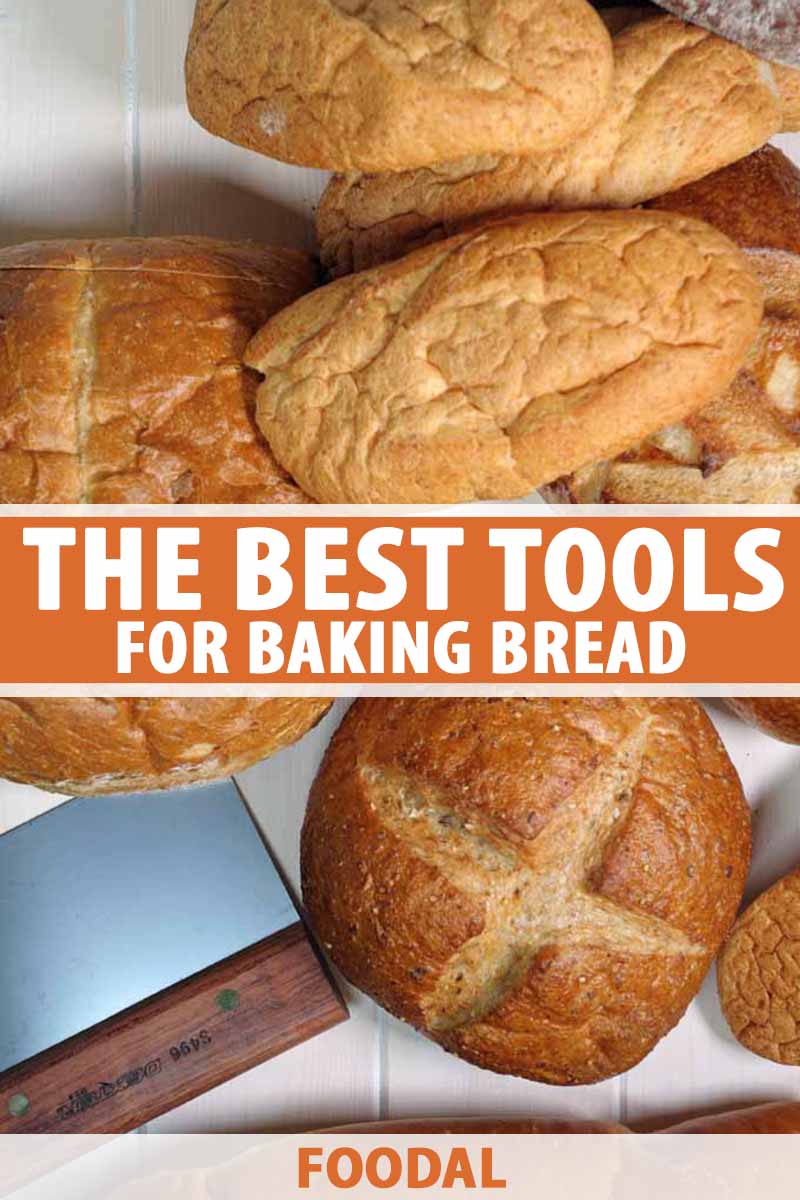
Fret not, Foodal is here to help you navigate the necessities so that you can focus your energy on achieving the perfect knead. We understand that baking your own bread at home can be daunting enough without having to figure out which tools are necessary, and which gear offers the best value!
There are several tools that aid in pulling the best flavor and texture out of your homemade bread. But while some of these will prove necessary from the start, others can wait until you feel prepared to up your game.
We’ve compiled a handy list of breadmaking necessities to simplify your shopping, along with a few little luxuries that will prove well worth the investment over time, as your bread habit grows.
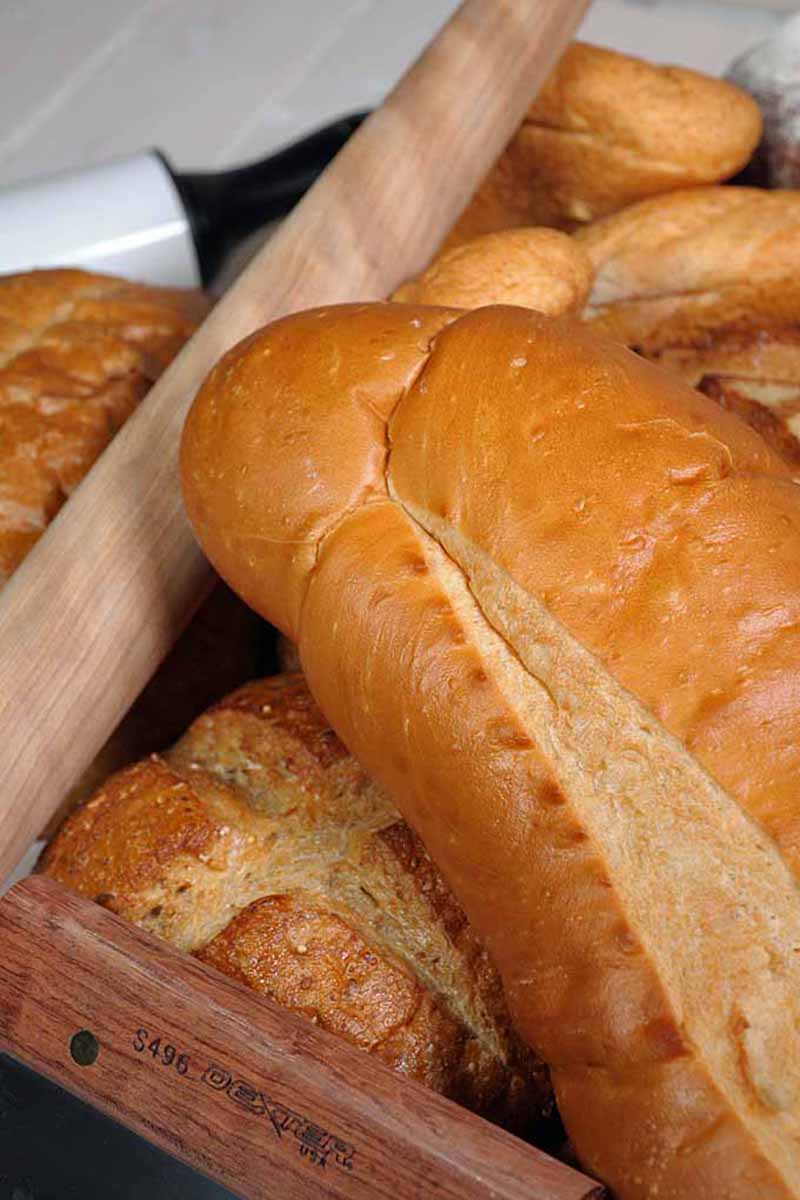
The best part is that each of these accessories can be used for so much more than making bread! You’ll be happy to find that they all come in handy in every aspect of cooking, both sweet and savory. Because really, who has the space for tools that can’t perform a multitude of functions?
I use each of these tools just about every day. In fact, if my kitchen had nothing else (save an oven and pantry), I could just about survive with nothing more than these nine items.
Foodal’s Top Tools for Baking Bread
Necessities
The following tools are the basic essentials every bread baker should have in the kitchen. These are the items that are absolutely necessary to ensure you bake every loaf, roll, braid, boule, and baguette with success!
1. Bowl Scraper
A bowl scraper is the underappreciated champion of the baker’s toolkit. From scraping down every last bit of cake batter to manipulating sticky bread dough, there is no tool more useful than a trusty scraper.
Ateco Bowl Scraper, available on Amazon
I prefer the white rectangular variety with one rounded edge, like this one by Ateco. The rounded side is invaluable in clearing a bowl, while the straight edge aids in cleaning batter out of tricky corners or off of tall sides.
Not just for cleaning, the bowl scraper functions as an extension of your own hand – providing better leverage than a spatula while keeping fingers clean. I love using my scraper for spreading marshmallows, kneading dough, even frosting a cake!
If I were to recommend a top tool needed in every home kitchen, this would undoubtedly be it. Plus they are easy on the wallet, making it easy to purchase quite a few! I like to keep three or four circulating in my home kitchen at all times, so that one is always at hand.
Find it on Amazon now.
2. Bench Knife
Much like the bowl scraper, the bench knife is another kitchen tool that’s deserving of higher praise – and it is particularly useful for those aiming to bake bread.
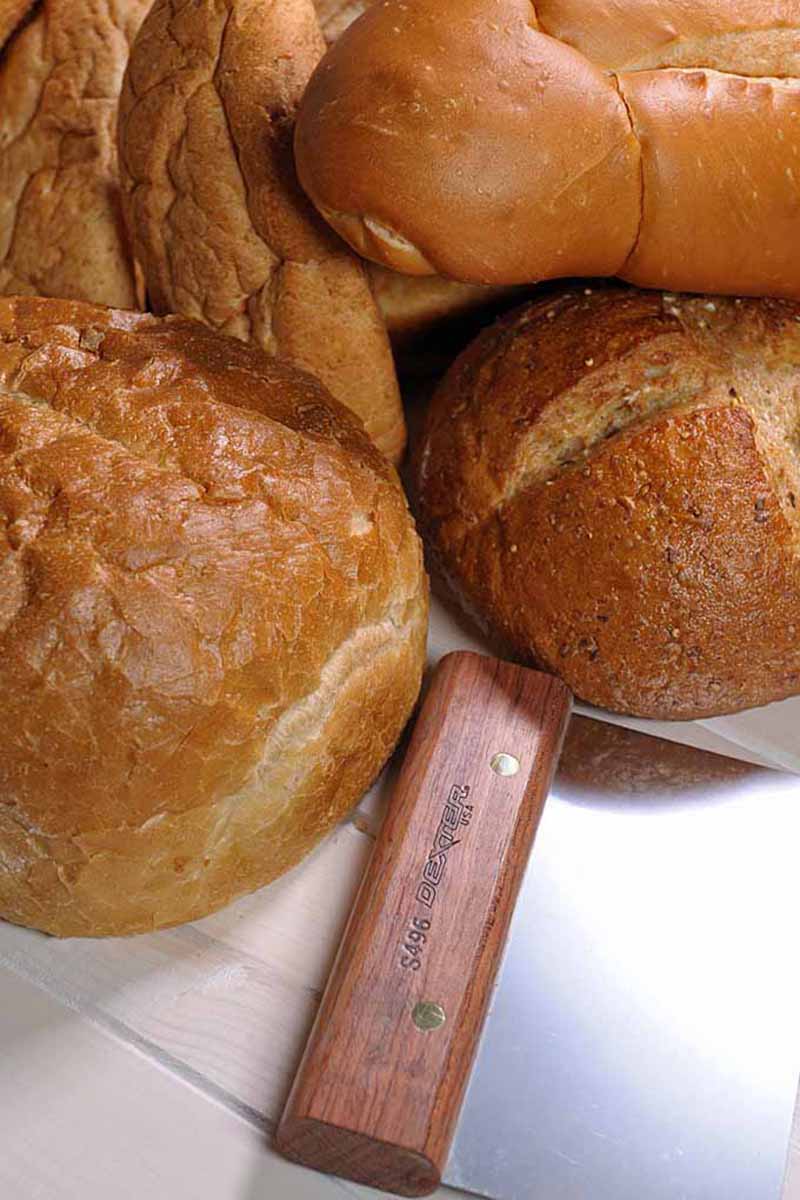
A dull, rectangular blade with an ergonomic handle, this tool will come in handy from start to finish. Cubing butter, portioning dough, transferring ingredients from cutting board to sauté pan, scraping down your workbench, cutting brownies – everything is made simpler with a bench knife in hand.
Dexter-Russell Walnut Dough Scraper, available on Amazon
The dull blade makes it acceptable to use without a cutting board – it won’t hurt your counters or your sheet trays, and likewise those surfaces won’t hurt the blade either.
It is easier to leverage than a typical knife, and will slice easily through bread dough, where it is particularly important to cut through rather than stretch out the gluten strands.
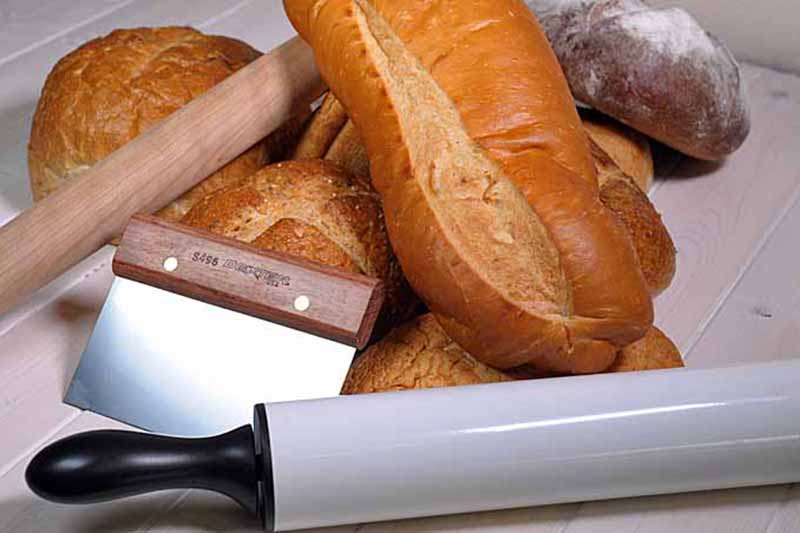
I prefer a knife with a sturdy wooden handle to plastic. It is easy to use and feels great in the hand.
The one pictured above by Dexter-Russell is my favorite – and it’s sure to become your go-to tool as well.
Find it on Amazon now.
3. Silicone Mat
Have you ever baked a loaf of free-form bread or delicately formed rolls, only to have them stick to the bottom of your pan? Are you tired of wasting excessive amounts of parchment paper – let alone the frustration of cutting it to the right size?
Get ready: a silicone mat is about to become your new best friend.
Silpat Premium Nonstick Silicone Baking Mat, Half-Sheet, available on Amazon
Typically made to fit half-sheet and full-sheet baking trays perfectly, these mats are easy to clean, reusable, and excellent at keeping things from sticking to the tray.
They are particularly helpful for making bread, but I also use them to bake free-form tarts and galettes, cookies, meringues, and more.
I especially love them for recipes involving a sprinkling of sugar – the caramelized bits that might be tricky to scrape off a metal tray slide right off the silicone mat.
I stick with the classic Silpat brand pictured above, but there are plenty of cheaper options available as well.
Available in multiple sizes on Amazon. Or, read our full review of Silpat silicone baking mats and other top-quality products here.
4. Loaf Pans
If you’re hoping to bake your bread into a sandwich loaf, than a sturdy loaf pan is a must. These are necessary for quick breads like banana or zucchini, and offer the perfect shape for a sturdy yeasted loaf bound for sandwiches as well.
USA Pan Bakeware Aluminized Steel 1 1/4 Pound Loaf Pan, available on Amazon
It is best to use a pan with sturdy sides that won’t get misshapen in the high heat. Additionally, you want a quality pan that will distribute heat evenly.
I recommend these aluminized steel pans by USA Pans as pictured above. Though cheaper options are available, these pans are built to last. And even with their quality build, they still won’t break the bank.
Check prices and other available sizes on Amazon now.
5. Thermometer
Have you ever pulled a beautiful loaf from the oven, smelled the heavenly scent wafting through the air, and patiently waited through the cooling process, only to be rewarded with a raw center?
I sure have. And let me tell you, it feels so defeating.
What to do?
Enter the need for a quality thermometer.
Goscien Digital Instant Read Waterproof Thermometer, available on Amazon
Not only will it ensure your loaves are baked all the way through, it can also help to gauge the temperature of water while activating yeast, or of dough in its initial rise.
I love the ease of use and quick results of a digital instant read probe thermometer, like this one from Goscien.
It can measure food temperature in just a couple seconds, and is completely waterproof. It can be washed under running water with zero issue.
This thermometer has a dual probe design: the 4.5-inch contractible probe has a 180 degree rotation, while the 7-inch detachable probe is connected to a 40-inch stainless steel mesh cable, allowing you to safely monitor temperature from a distance while the oven door remains closed.
It also features a large backlight screen for easy reading, as well as an internal magnet and large hole at one end for multiple storage options, whether you prefer to stick it on your fridge or place it on a hook.
You’ll get a lot of use out of a thermometer for far more than just bread! It’s also great for cooking sugar when making a meringue or marshmallow.
Read our guide to the multi-functional kitchen thermometer to find out more.
Read more and check customer reviews on Amazon now.
6. Scale
The final piece of kitchen equipment that will seriously assist your bread quality from the start is a good kitchen scale.
Volume measurements are inconsistent, and it can be difficult to portion dough by sight alone. Especially when it comes to crafting artisan loaves, a scale can be your closest companion.
OXO Good Grips Stainless Steel Food Scale with Pull Out Display, available from OXO
I like this stainless steel digital model with pull out display from OXO Good Grips, and find the quality and accuracy to be outstanding.
Many people avoid moving into weighed measurements, assuming they are more complicated than volumes. In fact, the opposite is true!
Without the need to dirty several measuring cups and spoons, cleanup is a breeze. Imagine the ease of portioning all of your ingredients directly into the mixing bowl! Not to mention the frustration avoided when that 1/4-cup measure goes missing…
It is well worth it to spend a little bit extra for a quality scale, as a cheaper variety might lose calibration, or lack sensitivity to light weight changes.
This particular model can hold up to 11 pounds on the stainless steel scale, and features a digital display that you can pull out from the base to help you easily read the measurement without any large bowls obscuring the reading. When you have finished weighing your ingredients, simply slide the display back in place for compact storage.
The scale includes a zeroing function, as well as a unit conversion function that measures in increments of either .1 ounce or 1 gram.
Read reviews and get pricing on OXO now.
Really Helpful Luxuries
If you’re looking to expand from the basic necessities, consider buying any of the following tools. These helpful luxuries will give you more baking creativity with your breads, helping you on your journey to make, shape, and serve gorgeous products.
7. Lame
When it comes time to bake your loaf, higher hydration (i.e. wetter) varieties require a slice through the top.
This is used to create beautiful and unique designs atop loaves, or to differentiate varieties. But the slice is not just for looks – it serves an important role in aiding the baking as well, helping to ventilate the loaf so that steam can escape and give the bread one final rise.
A knife will do just fine when you’re starting out. But as you improve your bread making, you will likely want a tool that offers more precision – particularly if you’re looking to develop your own signature design!
A lame (pronounced la-may) is just the tool you need. This simple contraption holds a sharp razor blade that lightly and swiftly slices through the top of a loaf of proofing bread.
Make sure to buy one with a replaceable blade, so you don’t need to throw the whole thing out when it dulls.
The simple wooden-handled model by Sur La Table is just what you need.
With its simply designed handle and finger grip, light weight, and curved thin stainless steel blade, you’ll have a sturdy hold as you cleanly and accurately score your dough with a few quick movements.
It comes included in a storage box with 5 replaceable blades and a leather protective cover for the blades.
Review product information and customer comments on Sur La Table.
8. Baker’s Baskets: Brotform and Banneton
Have you ever wondered how bakers achieve those beautiful round flour designs on their artisan loaves? Or have you wished for a simple proofing bowl that makes it easy to turn dough out onto a hot pan?
The trick is in the basket.
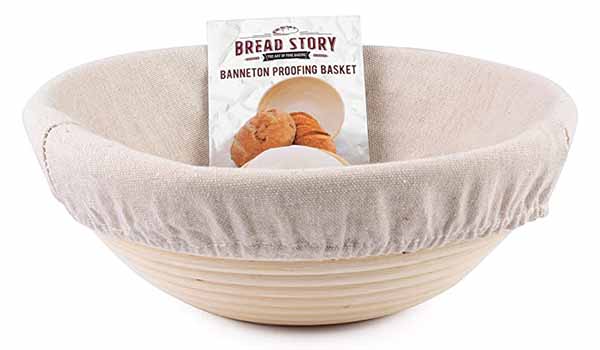
Bread Story 8.5-inch Round Proofing Basket with Cloth, available on Amazon
Brotform and Banneton are the two most well-known baker’s baskets. They are essentially the same, the former being German and the latter French.
Though the names are used to differentiate between the woven basket lined with linen from the coiled form, today the two are often used interchangeably.
Available in round or rectangular varieties, these baskets are useful for baking everything from boules (round loaves) to batards (rectangular loaves similar to a short baguette).
Bread Story 10-by-6-inch Oval Proofing Basket with Cloth, available on Amazon
I consider them a luxury because a mixing bowl or colander lined with a generously floured kitchen towel will do the trick when you are getting started.
The baskets from Bread Story are made of unbleached natural rattan cane formed in concentric coils, and come included with a removable liner made from durable cloth material with an elastic band that securely stretches around the baskets.
But if you hope to craft lovely loaves with any regularity, trust me when I say that you will thoroughly enjoy a good basket.
Check reviews and learn more now on Amazon for both the round and the oval models.
9. Dutch Oven
Chances are your home oven has trouble holding a temperature of 450°F, and I would bet that you don’t have steam injectors comparable to the deck ovens of your favorite artisan bakery either.
Lodge 6-Quart Enameled Cast Iron Dutch Oven, available on Amazon
A Dutch oven is the ideal method of mimicking these qualities at home. It effectively holds a high temperature longer than a home oven, plus it contains the steam released by the bread, assisting in lift and the formation of a nice crust.
A round six-quart model, such as the one pictured above, is a great size and shape to start with. From there, you can get a better idea of what other sizes that you may want.
For those who are still learning, spraying the oven with a stream of water or dropping in ice cubes will help to mimic this step. But again, like the basket, a Dutch oven will seriously elevate your loaves when you’re ready to take things up a notch.
Although those made by Le Creuset and Staub are considered to be the “gold standard,” most of the staff at Foodal find that the Lodge models like this 6-quart enameled cast iron option offer the greatest bang for your buck.
Should you want the high-heat capacity but you aren’t quite ready for the added cost of a Dutch oven, a baking stone is a great middle step. Plus, it makes a mean pizza to boot!
Read customer reviews and prices on Amazon.
10. Bread Knife
You’ve gone through all that trouble to bake up a nice, tasty loaf only to realize that you’re destroying it as you cut into it! What to do?
Make sure that you have a high quality bread knife on hand. And no, not the model that came with that cheap Wally World knife set that you picked up for your first apartment.
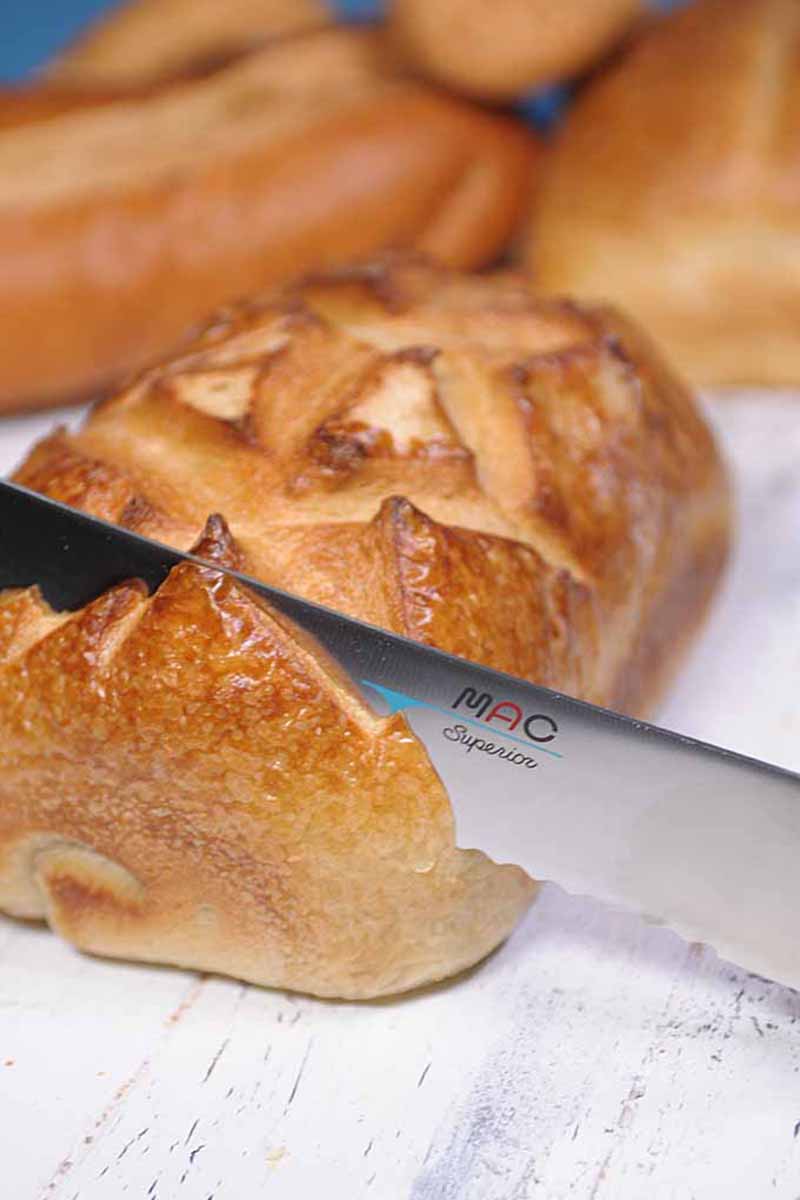
A good model will slice the toughest (and the softest) loaves with ease and leave you with a great presentation.
Not only that, they are great for slicing up cakes and tomatoes as well!
Which to pick?
I like the 10 1/2-Inch Mac Knife Superior Bread Knife.

Mac Knife Superior Bread Knife, available on Amazon
It’s super sharp. But better yet, being made of super hard Japanese steel, it’ll hold that sharpness for a long, long time.
I also love all the knuckle clearance that this beauty provides, and this makes it a true multitasker.
Read our complete guide to bread knives or check prices and reviews on Amazon.
11. Pastry Board
If your counter is not up to the job of rolling out dough or you want a surface that you can move over to the sink for a quick wash off, then consider a pastry board.
John Boos Countertop Reversible Edge Grain Cutting Board, available on Amazon
These are either made of marble, wood (usually maple), or bamboo. But we prefer the wooden ones, and here’s why:
Most of these feature a lip at either end that locks it to your counter or table while the opposite end acts as a backsplash.
Since they are reversible, one side can be use as a cutting board and the other side can be reserved for rolling out dough.
You DO NOT want to use marble as a cutting board. That’s the quickest way to tear up your knives. And bamboo isn’t that great for them either. You want wood.
See our cutting board guide for more information.
Which of the available pastry boards on the market do I like best?
That’s easy. The John Boos model pictured above, with dimensions of 23.75-by-23.75-by-1.25 inches.
No only is it flat on one side for dough and pastry use, it also features a gravy groove on the other that’s perfect to use as an everyday cutting board.
John Boos Countertop Reversible Edge Grain Cutting Board, available on Amazon
There are other cheaper products on the market, but most of them are thinner (which can lead to warping) and/or they often have exposed screw heads.
You’ve heard it mentioned here before, but it’s worth repeating – “life is too short for cheap tools!”
Now Put Them to Use!
Now that you know all about the necessities, along with a few worthwhile luxuries, you’ll have trouble finding a valid excuse to stall those bread baking experiments any longer.
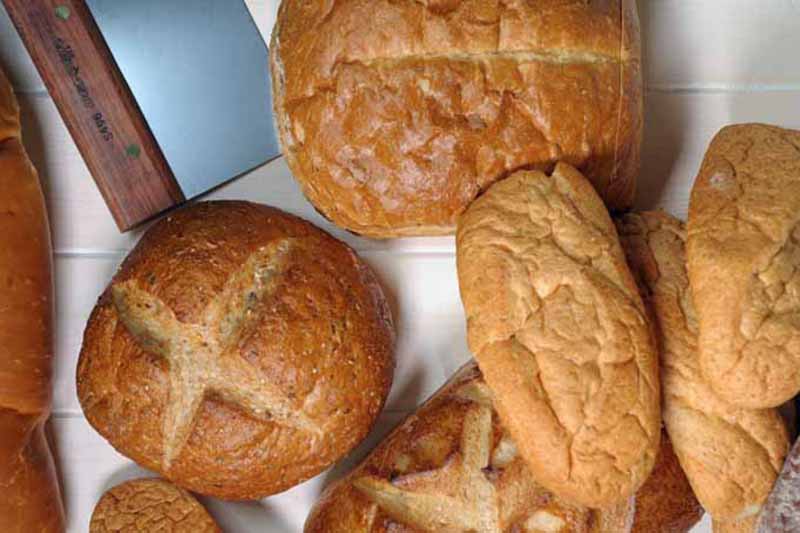
Ready to get bread baking? Explore our sourdough, brioche, enriched dough, and even pain paillasse recipe articles!
What are your favorite tools for baking your own rolls, loaves, and more at home? Let us know in the comments below!
Do you still have a few questions remaining about making bread from scratch? Refer to some of our other helpful baking guides next:
- Ultimate Guide to Shaping Bread
- 15 Tips and Tricks to Improve Your Baking Routine
- Guide to Flour: Sifting Through the Options
Photos by Mike Quinn, © Ask the Experts, LLC. ALL RIGHTS RESERVED. See our TOS for more details. Product photos via Ateco, Dexter-Russell, Silpat, USA Pan Bakeware, Goscien, OXO, O’Delice, Bread Story, Lodge, Mac, and John Boos. Originally published on November 15, 2016. Last updated on November 26, 2022, with additional writing and editing by Nikki Cervone.
About Kendall Vanderslice
Kendall’s love of food has taken her around the world. From baking muffins on a ship in West Africa and milking cows with Tanzanian Maasai, to hunting down the finest apfelstrudel in Austria, she continually seeks to understand the global impact of food. Kendall holds a BA in Anthropology from Wheaton College and an MLA in Gastronomy from Boston University, and has worked in the pastry departments of many of Boston’s top kitchens. Based in Somerville, Massachusetts, Kendall helps to run a small community supported bread bakery and writes about the intersection of food, faith, and culture on her personal blog, A Vanderslice of the Sweet Life.

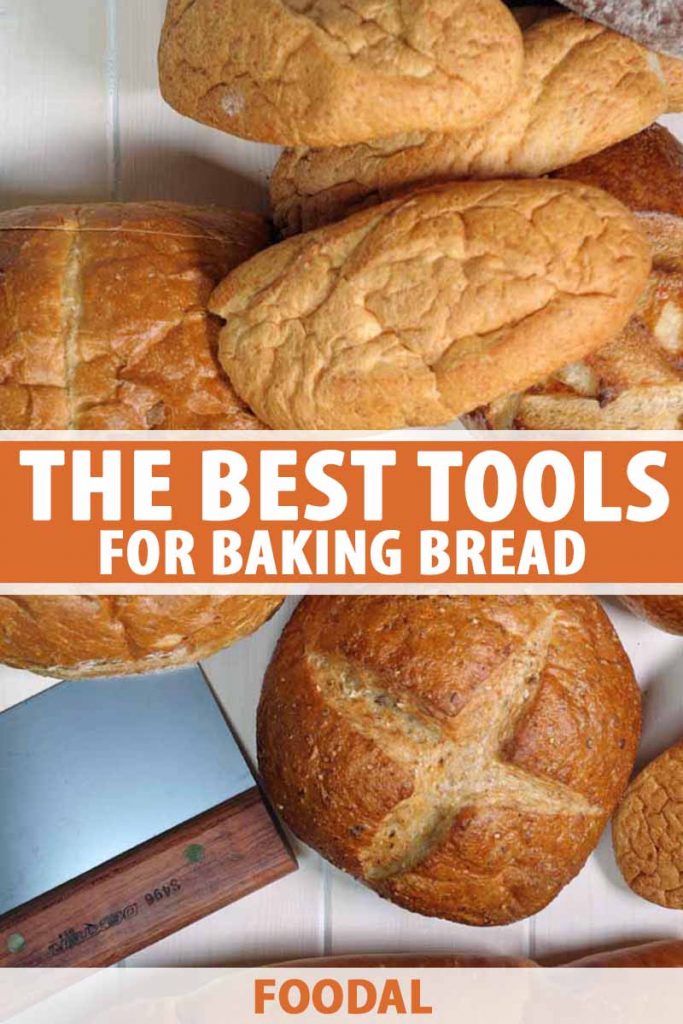
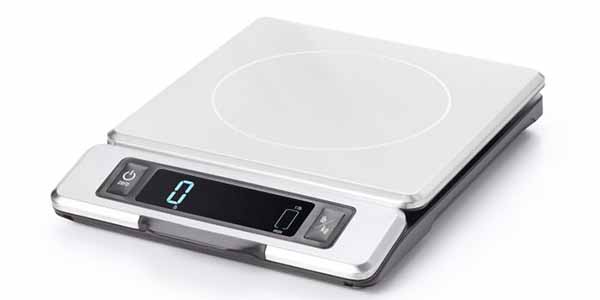
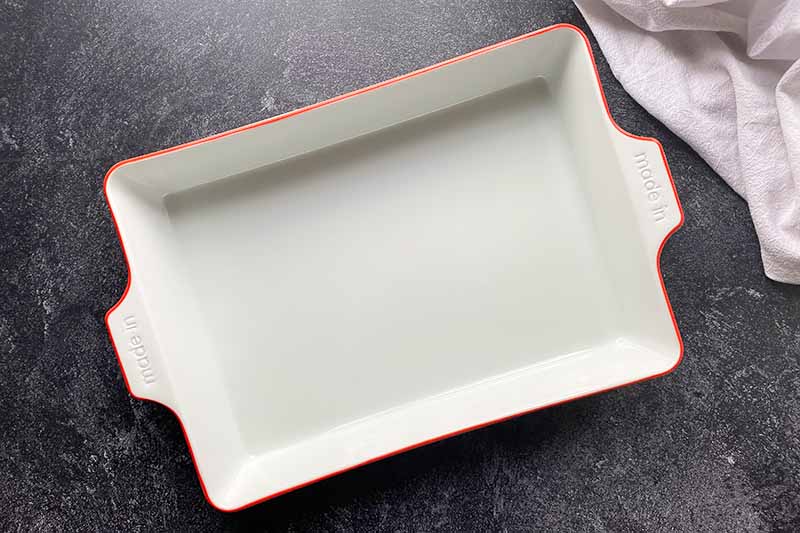

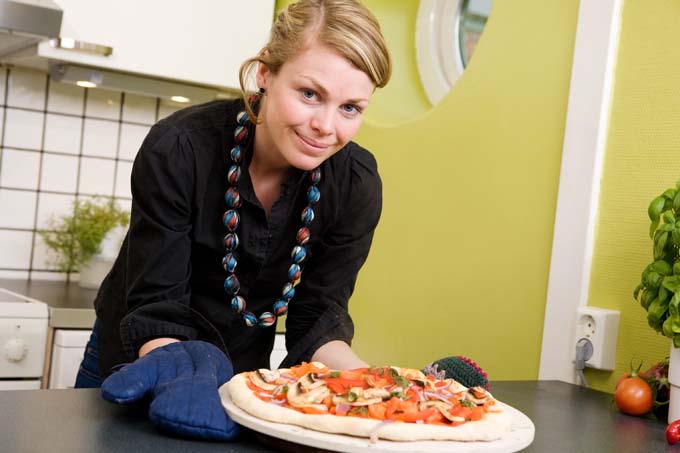
what tools equipment needed to make a bread sticks
No special equipment required, except maybe a pastry cutter. Check out our recipe for salted rosemary einkorn breadsticks here or try this recipe for no-knead Italian breadstick twists.
Thank you so much.